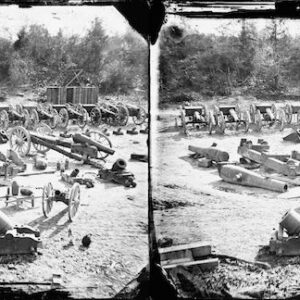Tag: Armstrong shell
 Wikipedia says: An Armstrong gun was a uniquely designed type of rifled breech-loading field and heavy gun designed by Sir William Armstrong and manufactured in England beginning in 1855 by the Elswick Ordnance Company and the Royal Arsenal at Woolwich. Such guns involved a built-up gun construction system of a wrought-iron (later of mild steel) tube surrounded by a number of wrought-iron strengthening coils shrunk over the inner tube to keep it under compression.
Wikipedia says: An Armstrong gun was a uniquely designed type of rifled breech-loading field and heavy gun designed by Sir William Armstrong and manufactured in England beginning in 1855 by the Elswick Ordnance Company and the Royal Arsenal at Woolwich. Such guns involved a built-up gun construction system of a wrought-iron (later of mild steel) tube surrounded by a number of wrought-iron strengthening coils shrunk over the inner tube to keep it under compression.
Return to muzzle-loading guns
In 1863 an Ordnance Select committee met to consider the merits of muzzle-loading and breech-loading guns. In 1864, even before they had concluded their investigations, the Government stopped the manufacture of Armstrong breech-loaders. When the Committee finally reported, in August 1865, they announced that:
The many-grooved system of rifling with its lead-coated projectiles and complicated breech-loading arrangements is far inferior for the general purpose of war to the muzzle-loading system and has the disadvantage of being more expensive in both original cost and ammunition. Muzzle-loading guns are far superior to breech-loaders in simplicity of construction and efficiency in this respect for active service; they can be loaded and worked with perfect ease and abundant rapidity.
Their report did admit that Armstrong’s guns, while more expensive, were undoubtedly safer in that while it was not uncommon for cast iron muzzle-loaders to burst, not one Armstrong gun had ever done so. (Furthermore, gunners could clear a hang fire from the breech; when the RML 17.72 inch gun at Napier of Magdala Battery at Gibraltar hung fire, a gunner had to be lowered head-first down the bore to attach an extractor to the shell.)
Despite a further report which remarked on the advantages of breech-loaders, cost dominated the proceedings and the Committee finally announced that “The balance of advantages is in favour of muzzle-loading field guns”, and in 1865 Britain reverted from breech-loading ordnance to muzzle-loading.
Tests conducted in 1859 with the Armstrong 40-pounder, and again in 1869 with the Armstrong rifled 100-pounder had demonstrated that neither rifled cannon was capable of penetrating 4 inches of armour, even at as little as 50 yards. This was crucial because Britain, as a maritime power, relied for its security on the ability of its naval ordnance to defeat any new armour-protected warships being developed by potential enemy powers.
Armstrong developed an alternative horizontal sliding wedge version of his breechloader, for 40-pounder and 64-pounder guns, in an attempt to address the limitations of the screw breech, but the Government had already decided to return to muzzle-loading guns.
Showing all 2 resultsSorted by latest

